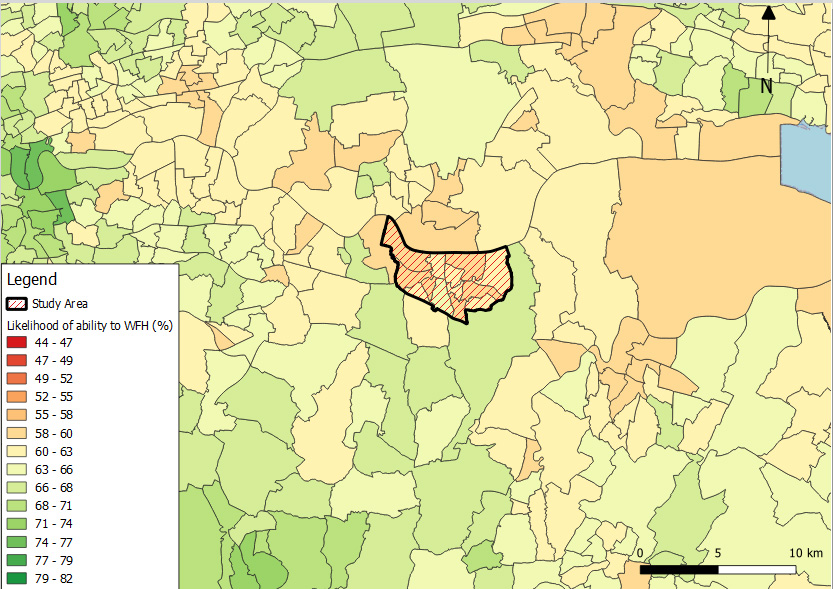A methodology to Createa Work-From-Home Trip Generation Indicator: An application in England and Wales
The dissertation was awarded the 2021 Best Dissertation prize, sponsored by WSP.
This dissertation exploits the consequence of the COVID pandemic to produce a methodology that creates a Work-from-Home trip generation indicator, which can be applied to current demand forecasting processes.
The analysis found that the change in GDP alone cannot account for the reduction in observed trips across different lockdown scenarios from the case study area (Gravesend, Kent). Moreover, when a bespoke WFH score for the study area was included in the formula, calculated by manipulating Of ce for National Statistics’ (ONS) published ‘ability to WFH scores’, car commuter trips were found to be more accurately forecasted. Through statistical testing using the GEH methodology, four indicators and their estimated ows were compared to observed ows to establish the best performing indicator. Separate to this, statistical and spatial analysis also found that ONS ‘ability to WFH scores’ were agreeable with current research in the impact occupation has on WFH. Furthermore, when applied to electoral wards across England and Wales, the spatial pattern of ability to WFH correlates well with relevant literature related to location and WFH rates.
These outcomes are important because homeworking has become and will likely remain more popular than pre- pandemic. The findings suggest that current forecasting techniques engender inaccurate forecast demand estimates that exclude the impact of homeworking on car commuter trips. Without including a WFH trip generation indicator to account for this impact, the forecast demand process utilised in England and Wales will remain inherently inaccurate.










